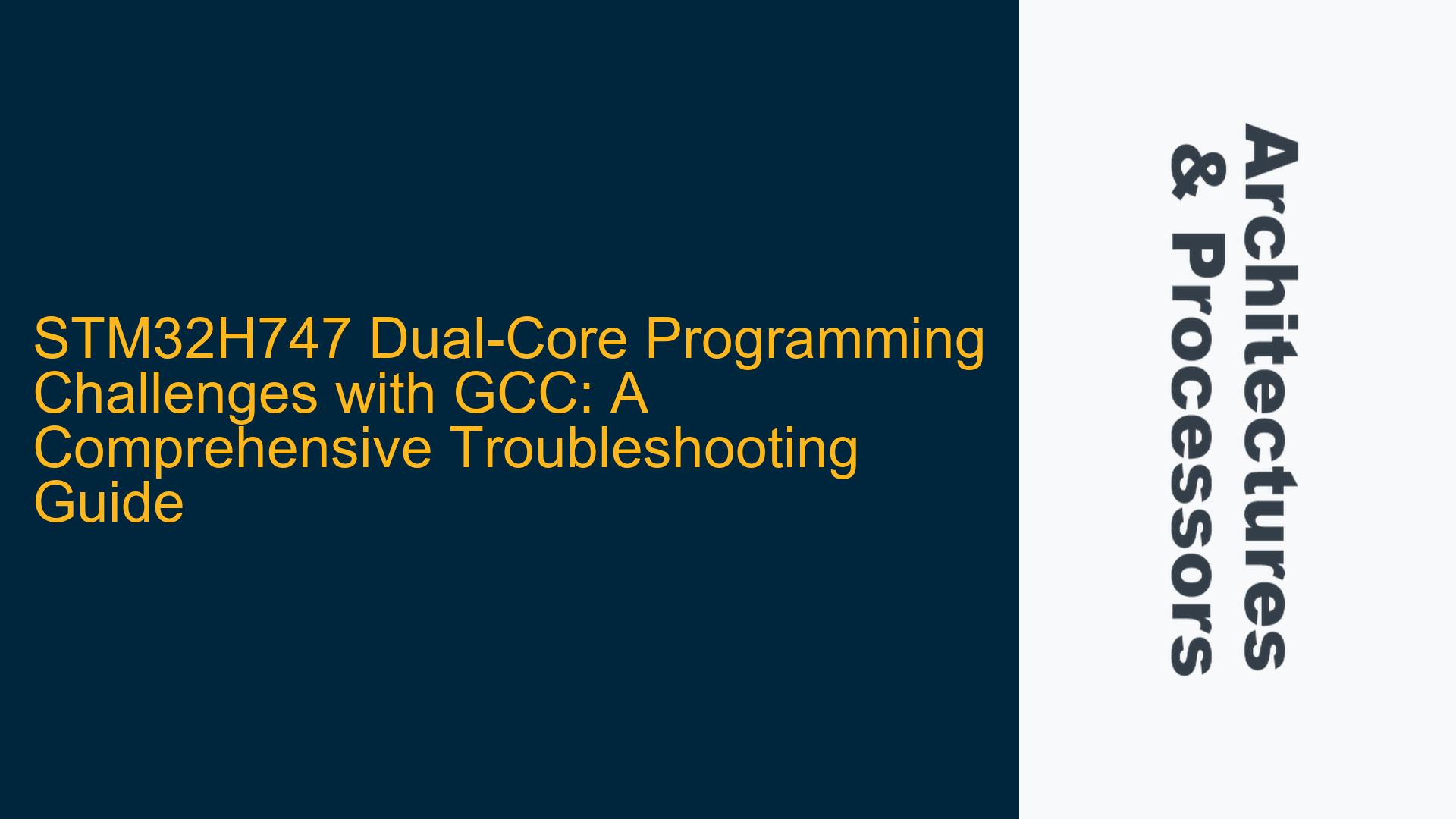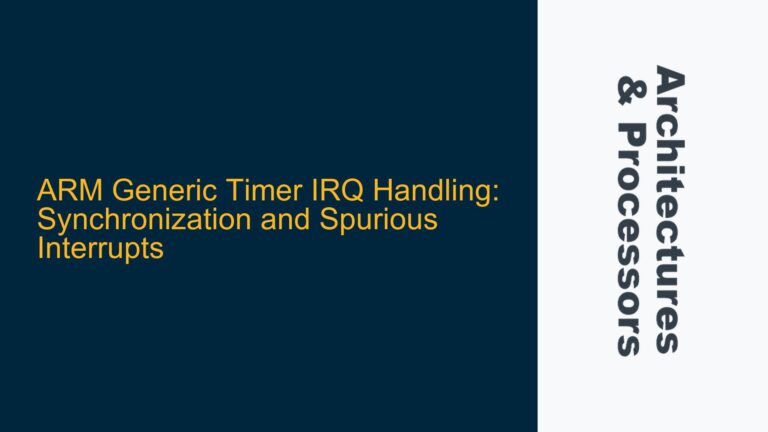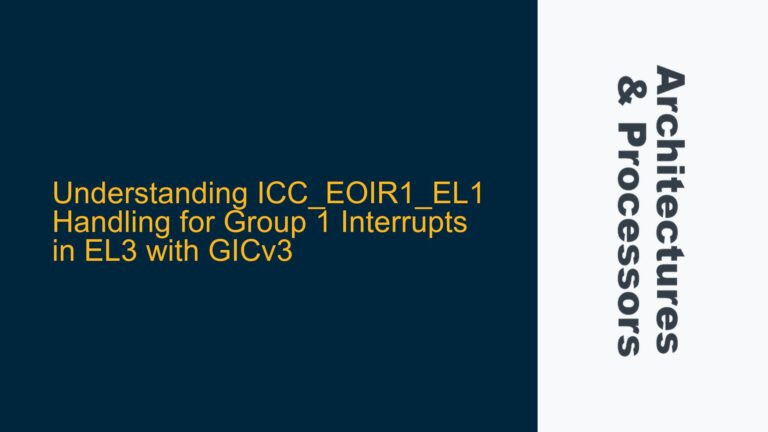Understanding STM32H747 Dual-Core Architecture and GCC Compilation
The STM32H747 microcontroller, featuring a Cortex-M7 and Cortex-M4 core, presents a unique set of challenges for developers, particularly when using the GCC toolchain. The dual-core architecture requires a nuanced understanding of both hardware and software interactions to ensure efficient and reliable operation. The Cortex-M7, with its higher clock speed and advanced features like cache and floating-point unit, is typically used for high-performance tasks, while the Cortex-M4 handles lower-power or real-time tasks. However, this heterogeneity introduces complexities in memory management, task synchronization, and inter-core communication.
When compiling code for the STM32H747 using GCC, developers must consider the specific requirements of each core. The Cortex-M7 and Cortex-M4 have different instruction sets and memory maps, necessitating separate compilation processes for each core. GCC, being a versatile toolchain, supports this through multi-core compilation strategies, but it requires careful configuration. The linker script must be tailored to allocate memory regions appropriately, ensuring that each core has access to its designated memory space without conflicts. Additionally, the startup code must be modified to initialize both cores correctly, taking into account their distinct reset sequences and clock configurations.
One of the primary challenges in dual-core programming is ensuring that both cores operate in harmony. This involves setting up inter-processor communication mechanisms, such as shared memory or hardware mailboxes, and implementing synchronization primitives like semaphores or mutexes. These mechanisms must be carefully designed to avoid race conditions and deadlocks, which can be particularly tricky in a heterogeneous dual-core system. Furthermore, the use of GCC introduces additional considerations, such as ensuring that the compiler flags are optimized for each core’s architecture and that the generated code is compatible with the specific features of the STM32H747.
Potential Pitfalls in Dual-Core Programming with GCC
Several potential pitfalls can arise when programming the STM32H747 with GCC, particularly in the context of dual-core operation. One common issue is improper memory allocation, where the linker script fails to correctly assign memory regions to each core. This can lead to overlapping memory spaces, causing data corruption or runtime errors. Another frequent problem is the incorrect initialization of the cores, where the startup code does not properly configure the reset and clock settings for both the Cortex-M7 and Cortex-M4. This can result in one core failing to start or operating at an incorrect clock speed, leading to performance issues or system instability.
Inter-core communication is another area where problems often occur. If the communication mechanisms are not correctly implemented, it can lead to data inconsistencies or synchronization issues. For example, if shared memory is used without proper locking mechanisms, one core may overwrite data that the other core is currently using, leading to unpredictable behavior. Similarly, if hardware mailboxes are not correctly configured, messages may be lost or misinterpreted, causing communication breakdowns between the cores.
Compiler optimization is another critical factor that can impact the performance and reliability of dual-core systems. GCC offers a range of optimization flags that can be used to tailor the generated code to the specific architecture of each core. However, using inappropriate optimization levels can lead to issues such as incorrect code generation, where the compiler optimizes out necessary instructions or introduces unintended side effects. This is particularly problematic in a dual-core system, where the behavior of one core can directly affect the other. Therefore, it is essential to carefully select and test the optimization flags for each core to ensure that the generated code is both efficient and correct.
Strategies for Effective Dual-Core Programming with GCC on STM32H747
To effectively program the STM32H747 using GCC, developers must adopt a systematic approach that addresses the unique challenges of dual-core operation. The first step is to thoroughly understand the memory architecture of the STM32H747 and create a linker script that correctly allocates memory regions for each core. This involves defining separate memory sections for the Cortex-M7 and Cortex-M4, ensuring that there is no overlap and that each core has access to the necessary resources. The linker script should also include provisions for shared memory regions, which can be used for inter-core communication.
The next step is to modify the startup code to properly initialize both cores. This includes configuring the reset and clock settings for each core, as well as setting up any necessary peripherals. The startup code should also include mechanisms for synchronizing the cores, such as setting up a shared flag that indicates when each core has completed its initialization. This ensures that both cores are ready to begin execution before any inter-core communication takes place.
Inter-core communication is a critical aspect of dual-core programming, and it requires careful design and implementation. One effective approach is to use hardware mailboxes, which provide a reliable and efficient means of passing messages between the cores. The mailboxes should be configured to support both synchronous and asynchronous communication, allowing the cores to exchange data as needed. Additionally, developers should implement synchronization primitives, such as semaphores or mutexes, to ensure that shared resources are accessed in a controlled manner. These primitives should be carefully tested to avoid race conditions and deadlocks.
Compiler optimization is another important consideration when programming the STM32H747 with GCC. Developers should experiment with different optimization levels and flags to find the best configuration for each core. This may involve using different optimization levels for the Cortex-M7 and Cortex-M4, depending on their specific requirements. It is also important to thoroughly test the generated code to ensure that it behaves as expected and does not introduce any unintended side effects. This may involve running the code on a simulator or using debugging tools to step through the execution and verify that the cores are operating correctly.
In addition to these technical considerations, developers should also adopt best practices for dual-core programming. This includes writing modular and well-documented code, which makes it easier to debug and maintain the system. It is also important to use version control systems to track changes and collaborate with other developers. Finally, developers should stay up-to-date with the latest developments in GCC and the STM32H747, as new features and optimizations may become available that can improve the performance and reliability of dual-core systems.
By following these strategies, developers can effectively program the STM32H747 using GCC, leveraging the power of its dual-core architecture to create high-performance and reliable embedded systems. While the challenges of dual-core programming are significant, they can be overcome with careful planning, thorough testing, and a deep understanding of both the hardware and software involved.






